Candida is a type of fungus that commonly causes vaginal candidiasis, which is one of the most common types of vaginitis1. Infection of the vagina is very common, of which yeast infections such as vaginal candidiasis are the second most common2. Yeast is always present in our body but may cause an infection when it overgrows. Conditions that may cause the loss of chemical balance, like pregnancy, antibiotic medications, diabetes etc., may lead to the occurrence of a vaginal yeast infection.
This guide describes the causes, symptoms and a few possible home remedies for vaginal yeast infections. It is important to note that this condition requires medical intervention, therefore, do not self-diagnose or take medications without proper consultation3.
A fungus called Candida causes vaginal yeast infections. This type of yeast is normally found in small amounts in the body and helps to maintain the natural balance of the microbiome. However, when this balance is disrupted, Candida can multiply rapidly and result in an yeast infection known as vulvovaginal candidiasis or vaginal candidiasis. This condition is characterised by symptoms of swelling, pain, and vaginal discharge3.
Some of the factors which may lead to the risk of vaginal yeast infections are:1,3,5
Although Candidal vaginal infections are very common and may resolve easily with topical treatment, if left untreated, this infection may result in complications characterised by redness, swelling and sometimes cracks in the walls of the vagina, which may be severely painful.
Dr Ashish Bajaj, M.B.B.S M.D. in Clinical Pharmacology and Toxicology
A few typical signs that can be noticed in the vagina if you have a vaginal yeast infection. They are as follows: 3,6
Some home remedies or natural methods may be helpful for vaginal yeast infections. However, using the following remedies is highly subjective and requires further research. They should only be used under the guidance of a medical professional.
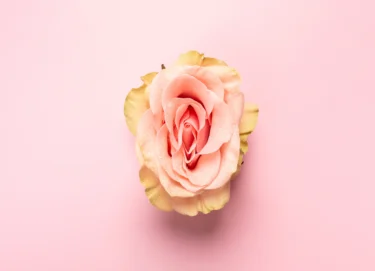
Doctors may suggest practices to help take care of the vulva, the outer part of female genitals which acts as the gate to the uterus and protects it as well as the vagina. The doctor may recommend tips such as not washing the vulva excessively and suggest not using certain irritants like perfumed soaps, vaginal sprays or powders and bubble baths4.
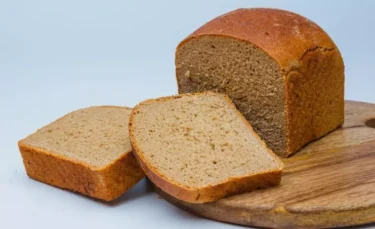
Research has shown that eating bread made with yeast may lead to repeated episodes of vaginal yeast infections. Another study showed that taking refined sugars may increase the risk of symptoms of vaginal yeast infections. Therefore, a diet low in yeast and refined sugars may help manage vaginal yeast infections. However, more research is needed to support these claims. Consult your doctor before making any changes to your diet3.
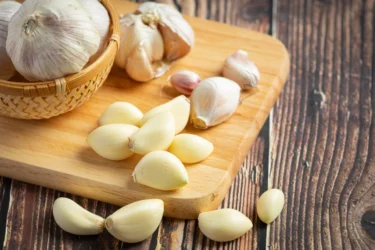
Garlic might have antifungal actions. Studies have shown that garlic might have the potential to help in vaginal yeast infections. The active compound in garlic, Allicin, might reduce fungal growth. Do not insert garlic directly into the vagina.
However, more studies on animals and humans is required to support its effectiveness. Garlic may also cause chemical burns or allergic reactions. Therefore, please consult a doctor before using this.6,7
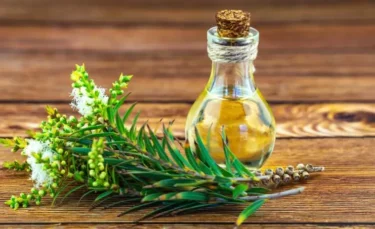
Several studies6 has found that tea tree oil may be beneficial as a herbal antifungal and antibacterial agent. Adding tea tree oil to the bath routine or using tea tree pessaries (a medicinal capsule inserted into the vagina) may be helpful. They products are also available as gels and creams. However, these products may cause severe irritation in some people so should only be used under medical supervision. In a study, it was hypothesised the effect of tea tree oil might depend on the acidic environment of the vagina. Therefore, the effects on the vagina might differ from one person to another.
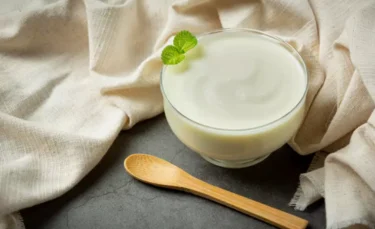
Probiotics are known as good bacteria which may help in vaginal yeast infections. The recolonisation (refilling the lost bacteria) of bacteria, especially lactobacillus, may be helpful. Therefore, your doctor may recommend eating yoghurt, probiotic capsules, etc. and may also prescribe probiotic creams that have to be applied to the vagina6.
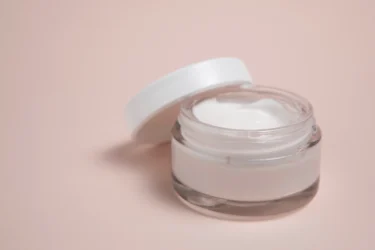
Creams with boric acid and other antifungal agents may be helpful against repeated vaginal yeast infections. Pessaries are certain medications that need to be inserted into the vagina. The pessaries have an antifungal agent that is enclosed in a gelatine capsule. When the gelatine capsule is placed in the vagina, it dissolves due to the body heat and the medicine is released. As the medicine is directly released into the vagina, it might act directly and help against the vaginal infection. It might be more effective than creams. Therefore, your doctor might suggest that you use them3,6.

Tight-fitting pants, pantyhose and synthetic underwear might lead to sweating. They are best avoided to prevent any fungal infections. It is better to use cotton clothing and underwear to relieve fungal infections. However, this does not have significant scientific evidence . Sun-drying or ironing freshly washed underwear may help sterilise it, reducing the risk of vaginal yeast infection1,3,4.
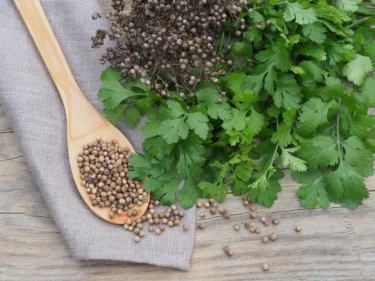
Research8 suggests that coriander seeds and leaves may be helpful against vaginal yeast infections. To use coriander seeds, you have to soak a few coriander seeds in water overnight. Straining the water and drinking it on an empty stomach may be beneficial. However, ensure that you consult a doctor before using this, to make sure it is appropriate for your situation.
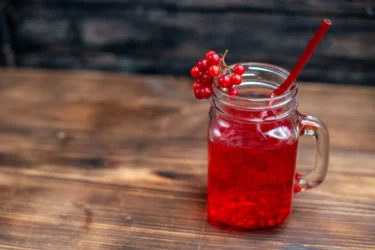
Drinking cranberry juice may also be helpful in vaginal yeast infection and drinking fresh cranberry juice without added sugars may be even better. However, more research is needed to support the benefits of cranberry juice in vaginal infections. A doctor’s guidance is advised to evaluate the best treatment for your condition9.
A few other home remedies for vaginal yeast infections are as follows:10
Ensure that you consult a doctor before using any home remedy.
Vaginal yeast infections are usually caused by a type of yeast called Candida albicans. It is normal for this yeast to live in the mucous membranes lining the genitals. Women should avoid using products that do more harm than good in excess, like vaginal douches or female intimate hygiene products. These products disturb the natural balance of germs and increases the risk of infections.
Dr. M.G. Kartheeka, MBBS, MD(Pediatrics)
There are insufficient studies that show the benefits of using herbal and home remedies which indicates a need for large-scale human studies to establish the true extent of the benefits of these home remedies on human health. Thus, home remedies should only be taken with caution and never as a substitute for medical treatment.
Also Read: Simple Home Remedies For Fungal Infections!
You should seek medical help from a doctor under the following circumstances:
If you are pregnant do not self-medicate for vaginal infections, immediately seek the guidance from a doctor .You must not rely on home remedies alone for the treatment of the condition and should consult a qualified doctor for any advice for condition if the symptoms do not improve with home remedies.
Also Read: What Is PCOD? Know It’s Symptoms, Causes & Treatment
Vaginal yeast infection is caused by a specific fungus or yeast called Candida. This yeast is normally present in the body but causes an infection when there is a disruption of the chemical balance in our body. As a result, you may experience redness and itching with white, thick, cottage-cheese consistency discharge from the vagina. It is advised to visit a doctor who can help guide you with the appropriate medicines and home remedies. Some tips that your doctor may suggest is to maintain good vulvar hygiene, wear breathable fabrics, and manage blood sugar levels to reduce the risk of recurrence. It is important to seek medical help to maintain overall reproductive health.
Also Read: Effective Home Remedies For Vaginal Dryness
Home remedies for vaginal yeast infections include probiotics, garlic, tea tree oil, cranberry juice, coriander seeds, lady’s finger etc. It is also observed that avoiding sugars and yeast-containing bread may be beneficial. However, more research is required to prove these effects in vaginal yeast infections. Consult a doctor before using any home remedy3.
You should consult a doctor if you have a white vaginal discharge as it can be due to many reasons. Do not rely on home remedies, instead consult a doctor at the earliest for early diagnosis and treatment.
Garlic has a bioactive compound (allicin), which may have beneficial antifungal and antibacterial properties to help in the management of yeast infections. It may also cause chemical burns and allergies. More research is needed to support its use, be cautious when using home remedies and ensure you consult a doctor before using them.
Tea tree oil may be beneficial in managing vaginal yeast infections. Your doctor might recommend adding it to baths or as pessaries. However, more research is needed to explore its potential side effects in humans. Always seek medical guidance before using this essential oil.
Apple cider vinegar may or may not be effective against yeast infections. More research is needed to support its effect against yeast infections. Therefore, always consult a doctor before using such home remedies.
Probiotics may help in vaginal yeast infection. However, more research is needed to support these claims and the use of probiotics as a remedy should be done only with the guidance of a doctor.
1.Jeanmonod R, Jeanmonod D, Chippa V. Vaginal Candidiasis (Vulvovaginal Candidiasis) [Internet]. National Library of Medicine. StatPearls Publishing; 2024 [cited 2025 Apr 17]. Available from: https://www.ncbi.nlm.nih.gov/books/NBK459317/
2. Madhavan P. Introduction Vulvovaginal candidiasis (VVC) is the second most common cause of vaginitis (inflammation of vaginal) after bacterial vaginosis and trichomoniasis.1 Approximately, 75% of women worldwide experience a single episode of VVC and 50% of them [Internet]. Academia.edu. 2020 [cited 2025 Apr 17]. Available from: https://www.academia.edu/80897958/Introduction_Vulvovaginal_candidiasis_VVC_is_the_second_most_common_cause_of_vaginitis_inflammation_of_vaginal_after_bacterial_vaginosis_and_trichomoniasis_1_Approximately_75_of_women_worldwide_experience_a_single_episode_of_VVC_and_50_of_them
3. World. Candidiasis (yeast infection) [Internet]. Who.int. World Health Organization: WHO; 2025 [cited 2025 Apr 17]. Available from: https://www.who.int/news-room/fact-sheets/detail/candidiasis-(yeast-infection)
4. Vaginal Candidiasis (Yeast Infection). Journal of Midwifery & Women’s Health [Internet]. 2021 Nov [cited 2025 Apr 17];66(6):825–6. Available from: https://onlinelibrary.wiley.com/doi/10.1111/jmwh.13326
5.Torondel B, Sinha S, Mohanty JR, Swain T, Sahoo P, Panda B, et al. Association between unhygienic menstrual management practices and prevalence of lower reproductive tract infections: a hospital-based cross-sectional study in Odisha, India. BMC Infectious Diseases [Internet]. 2018 Sep 21 [cited 2025 Apr 17];18(1). Available from: https://pmc.ncbi.nlm.nih.gov/articles/PMC6150969/
6. Satora M, Grunwald A, Zaremba B, Frankowska K, Żak K, Tarkowski R, et al. Treatment of Vulvovaginal Candidiasis—An Overview of Guidelines and the Latest Treatment Methods. Journal of Clinical Medicine [Internet]. 2023 Aug 18 [cited 2025 Apr 17];12(16):5376. Available from: https://www.ncbi.nlm.nih.gov/pmc/articles/PMC10455317/
7. Bekut M, Brkić S, Kladar N, Gavarić N, Božin B. Garlic clove applied as vaginal suppository – A case report. Complementary therapies in medicine [Internet]. 2018 Aug [cited 2025 Apr 17];39:97–100. Available from: https://pubmed.ncbi.nlm.nih.gov/30012400/
8. Freires I de A, Murata RM, Furletti VF, Sartoratto A, Alencar SM de, Figueira GM, et al. Coriandrum sativum L. (Coriander) Essential Oil: Antifungal Activity and Mode of Action on Candida spp., and Molecular Targets Affected in Human Whole-Genome Expression. Mylonakis E, editor. PLoS ONE [Internet]. 2014 Jun 5 [cited 2025 Apr 17];9(6):e99086. Available from: https://www.ncbi.nlm.nih.gov/pmc/articles/PMC4047076/
9. Rane HS, Bernardo SM, Howell AB, Lee SA. Cranberry-derived proanthocyanidins prevent formation of Candida albicans biofilms in artificial urine through biofilm- and adherence-specific mechanisms. Journal of Antimicrobial Chemotherapy [Internet]. 2013 Oct 10 [cited 2025 Apr 17];69(2):428–36. Available from: https://pmc.ncbi.nlm.nih.gov/articles/PMC3937597/Available from: https://pmc.ncbi.nlm.nih.gov/articles/PMC3937597/
10. The Inhibitor Activity Test of Green Okra Fruit Fraction (Abelmoschus Esculentus) Against Candida Albicans [Internet]. Iocspublisher.org. 2025 [cited 2025 Apr 17]. Available from: https://midwifery.iocspublisher.org/index.php/midwifery/article/view/617
Disclaimer: The information provided here is for educational/awareness purposes only and is not intended to be a substitute for medical treatment by a healthcare professional and should not be relied upon to diagnose or treat any medical condition. The reader should consult a registered medical practitioner to determine the appropriateness of the information and before consuming any medication. PharmEasy does not provide any guarantee or warranty (express or implied) regarding the accuracy, adequacy, completeness, legality, reliability or usefulness of the information; and disclaims any liability arising thereof.
What exactly does a high uric acid level mean, and should it be our concern? Uric acid is a waste product present in the blood. Uric acid is produced when compounds called purines are metabolized[1]. Under normal conditions, uric acid passes through the kidneys and urine. However, when we eat food high in purine content, uric acid levels increase in the body, leading to the formation of uric acid crystals. This deposition of uric acid crystals in the body is called gout. Let’s read about it in detail.
When we eat food with high purine content, there are chances of increased uric acid levels. Some of the foods that can lead to an increase in uric acid are:
The increase in uric acid does not present with specific symptoms unless it has progressed to the occurrence of diseases such as gout and uric acid nephrolithiasis (kidney stones). The symptoms of these diseases may manifest as the following:
The increased uric acid in the blood does not indicate the need for treatment. Most people with high uric acid levels do not have any symptoms and do not require long-term treatment.
Although high uric acid does not indicate the need for treatment, it might require minor changes in lifestyle and food habits. It is also believed that lifestyle is a key contributing factor to the development of increased uric acid and gout. Some of the possible home remedies/modifications are listed below.
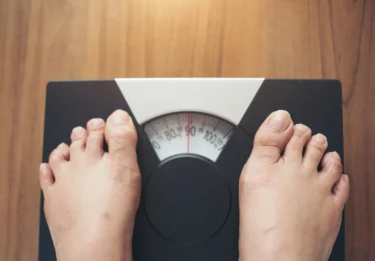
Research[3] shows that uric acid levels correlate with an individual’s body mass index (BMI) and metabolic syndromes (heart diseases, diabetes, etc.). Weight management through dietary modifications and exercise might help reduce the uric acid levels in the blood. Furthermore, a gradual weight loss might be more helpful for uric acid levels than drastic changes.

Activities like sunbathing and exercise-induced profuse sweating, which lead to dehydration, might cause an increase in uric acid levels. Thus, dehydration might be a factor leading to a high uric acid level and a gout attack. Therefore, your doctor might suggest that you drink plenty of water. The recommended daily intake of water is six to eight glasses, which might change according to the weather conditions and daily activities[4].
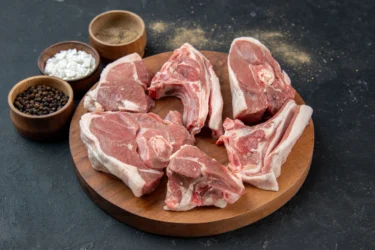
Food containing purine may or may not lead to an increase in uric acid. A study[13] conducted from 1988-1994 showed that high consumption of seafood and meat causes a rise in uric acid in the blood. Another study[5] on 45,000 men over 12 years showed that a moderate intake of vegetables rich in purine, like peas, lentils, asparagus, etc., did not increase uric acid. Therefore, your doctor will recommend a proper diet to decrease high uric acid levels.

Sweetened beverages or soft drinks contain fructose. Fructose is one of the most commonly used sugars. Increased intake of sugars, high-fructose corn syrup, etc., has led to the occurrence of new-age diseases, like diabetes, obesity, etc., including high uric acid (hyperuricemia) and gout. Therefore, avoiding such beverages might help check uric acid levels in the body[6].
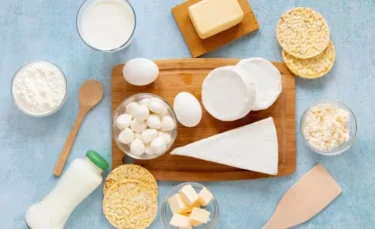
Choi et al. [7] conducted an epidemiological study to find that dairy products might have the potential to help decrease uric acid levels. It might also decrease the risk of gout. The mechanism of action is still not clear. However, the activity of milk in lowering the serum uric acid level was noted in comparison to soy. In another study[8] by Kurajoh et al., they hypothesised that milk might also facilitate the excretion of uric acid by increasing its urinary clearance.
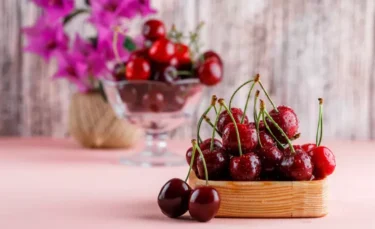
Based on anecdotal evidence[9], cherries have been used for decades for gout treatment. In 1950, Blau noticed that his gout pain subsided after eating some cherries. Thus began the investigation of cherries and their potential for gout. Several studies found that the potential antioxidant (free radical neutralizing) and anti-inflammatory properties of cherry and cherry juice might be helpful in gout. A significant reduction in gout attacks (by 35%) was seen in a study[10] containing 633 patients. Therefore, cherries might be helpful for gout and uric acid.
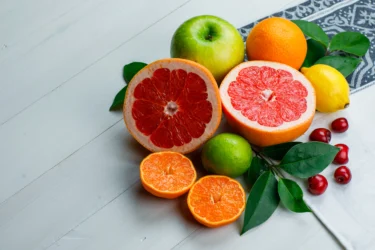
A decrease in the uric acid level, probably due to its increased excretion, was seen as a result of vitamin C supplementation in a study. Another study[11] containing 46,994 men over 20 years showed a positive correlation between serum uric acid level and vitamin C intake. It was seen that the subjects taking vitamin C had a lower risk of developing gout. This finding might be due to its potential antioxidative properties. Therefore, vitamin C might help lower uric acid levels in the blood.

A recent development[12] showed that there might be a relationship between stress and uric acid. Daily emotional stress might lead to an increased uric acid level in the body. Therefore, it might be suggested to manage stress using various time management methods and seek help when required.
Though studies show the benefits of the given herb and home remedies in the condition, these are insufficient. There is a need for large-scale human studies to establish the true extent of the benefits of these home remedies on human health. Thus, these should only be taken cautiously and never as a substitute for medical treatment.
In the absence of symptoms, high uric acid is not a condition or a disease that is actively looked for by doctors. However, high uric acid may lead to gout or kidney stones. Suppose you have gout symptoms or kidney stones; your doctor might ask for a blood examination. The blood examination may or may not reveal high uric acid.
If you are concerned that the current medication you’re taking might lead to high uric acid, you should talk to your doctor. However, ensure that you do not discontinue, replace, or make any amendments to any ongoing treatment. Kindly consult a doctor.
You must not rely on home remedies alone for the treatment of the condition and should consult a qualified doctor for any advice on the condition if the symptoms do not improve with home remedies.
Also Read: 8 Best Home Remedies For Piles
A high uric acid level is not a disease or a condition that requires active monitoring or long-term treatment. Most people might not even have any symptoms. However, high uric acid might lead to gout and kidney stones. These might have symptoms such as pain, swelling, redness, etc. (in gout) and pain in the flank, vomiting, etc. (kidney stones). However, there are lifestyle modifications or dietary changes like avoiding purine-rich foods, and increasing water intake, including dairy products and cherries in your diet, etc. that might help reduce excess uric acid.
Cherries have been used for ages for gout. It may have antioxidant and anti-inflammatory properties, which might help with gout. However, its potential use for uric acid reduction is not known. Kindly consult a doctor.
Vitamin C might help reduce the uric acid levels in the body. This might be due to its potential antioxidant activity. However, more research is required to prove its possible use.
No, there are no reports of bitter gourd as a home remedy for high uric acid.
Disclaimer: The information provided here is for educational/awareness purposes only and is not intended to be a substitute for medical treatment by a healthcare professional and should not be relied upon to diagnose or treat any medical condition. The reader should consult a registered medical practitioner to determine the appropriateness of the information and before consuming any medication. PharmEasy does not provide any guarantee or warranty (express or implied) regarding the accuracy, adequacy, completeness, legality, reliability or usefulness of the information; and disclaims any liability arising thereof.
Stomach ulcers are open sores present in the stomach wall. It develops when the acid in your stomach starts damaging your stomach lining. Damage to the stomach wall causes open sores, which might cause pain and bleeding1.
Stomach ulcers are common among people and are manageable. Still, you should take stomach ulcers seriously and get timely medical help. They are also called gastric ulcers. Ulcers can also develop around the duodenum wall, the first part of the small intestine. These ulcers are known as duodenal ulcers. Stomach ulcers require medical care and treatment, even if they don’t cause symptoms. If not treated in time, stomach ulcers can get worse. Therefore, medical help is necessary1.
There are also some herbal remedies that you can use to manage the symptoms of stomach ulcers at home. The benefits of these herbs and the method to use them are mentioned below.
Did you know?
The common causes of stomach ulcers are mentioned below.
Some rare causes of stomach ulcers are:
Some stomach ulcers may not cause any symptoms. These stomach ulcers are also called ‘silent ulcers’. Some common symptoms of stomach ulcers are:
The remedies mentioned below can help you take care of your stomach and manage the symptoms of stomach ulcers.
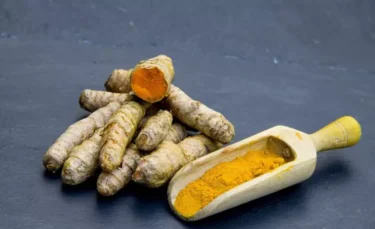
Turmeric is a potent anti-inflammatory and antioxidant remedy that could be extensively used as a medicinal herb. It is found throughout India. Because of its antioxidant activity, it may help reduce ulceration. It might also reduce the inflammation and swelling in the stomach lining3. You can put turmeric in your foods and dishes. You can also add turmeric powder to a glass of warm water. Drinking this water will help you manage stomach ulcers.
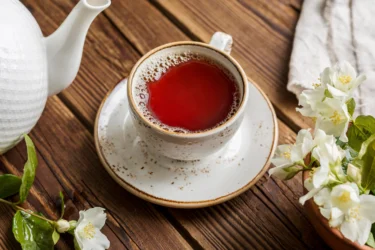
Tea or Camellia sinensis is one of the most popular nonalcoholic beverages worldwide. It might be helpful for stomach ulcers because of its rich antioxidant benefits. The antioxidant activity of tea might be good for managing ulcers. It could also reduce swelling in the stomach and increase the production of mucin. Mucin is responsible for forming the protective barrier of the stomach wall3. You can prepare black tea at home and get all its antioxidant benefits.
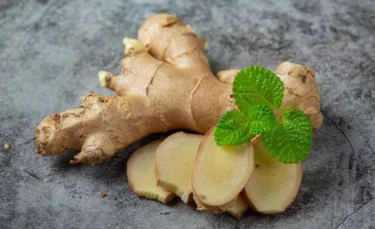
Ginger is widely used as a therapeutic herb in many parts of the world. Ginger might be an effective remedy for many gastric ailments like indigestion and gas. It is good for reducing stomach distress. It may also be effective for stomach ulcers because of its antioxidant activity. Ginger could be used as an ingredient in food and dishes. You can put ginger in your soups, salads, and other side dishes.
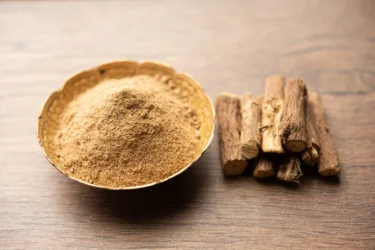
Liquorice is the root of the plant scientifically known as Glycyrrhiza glabra. It is often used in the management of gastric ulcers in Europe. Liquorice may help by enhancing mucin production in the stomach, increasing the vitality of the cells lining the stomach, and promoting ulcer healing3. Liquorice root can be used to make tea. Heat some water in a saucepan or kettle till it boils. You can put some liquorice root powder and a little honey in the boiling water for taste. Let the tea simmer on low flame. Strain it in a cup and enjoy.
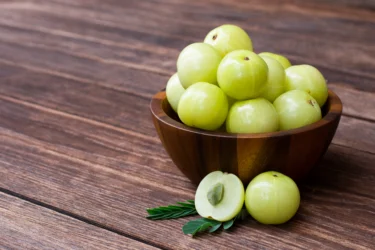
Indian gooseberry or Amla is widely consumed as a fruit and food product. This fruit is often used as a medicinal ingredient in the Ayurvedic and Siddha systems of medicine. It possesses antioxidant and anti-inflammatory properties, which might help manage ulcers. Intake of amla in the form of fruit or juice might help you manage gastric ulcers3.
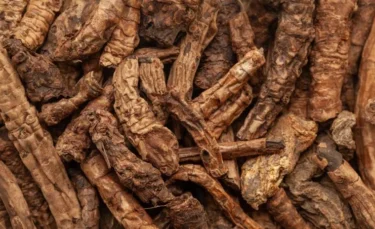
Kutki or Picrorhiza kurroa is a medicinal herb grown in tropical regions of the country. This herb is known for its antioxidant benefits, because of which it might act as an effective stomach protective agent. You can take kutki powder with a glass of warm water. You can also add some honey for taste3.
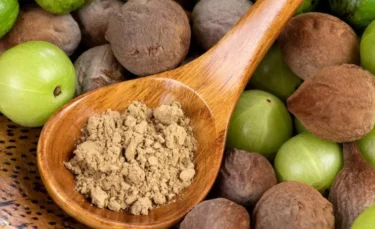
Harad is a medicinal herb known as Myrobalan in English. It offers many health benefits. It may also be helpfulfor many stomach ailments like gastritis (inflammation and swelling of the stomach) and stomach ulcers. It might help form a protective barrier for the stomach lining and prevent ulcer formation. You can mix some harad powder in warm water. Intake of this mixture might help you relieve stomach ulcers4.
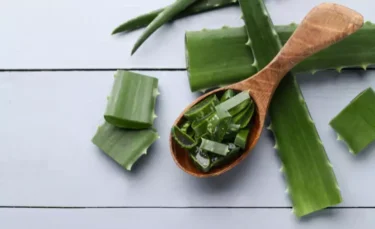
Aloe vera is used as a herbal medicine for many health conditions. For example, Aloe vera has wound healing and anti-inflammatory properties, because of which it could be an effective remedy for stomach ulcers. Consuming pure aloe vera gel regularly might help you reduce the swelling in the stomach lining and promote the ulcers’ healing7. You can also try aloe vera juice to get the benefits.
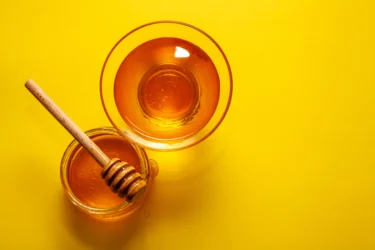
Honey is one of the most popular medicinal ingredients used in the Ayurvedic system of medicine. It is good for many stomach conditions such as gastritis and peptic ulcers. It is mainly recommended to manage stomach ulcers. Honey has healing powers that might be beneficial in dealing with stomach ulcers5. You can eat a spoonful of honey directly. You can also take honey with a glass of warm water to relieve stomach ulcers.
Though there are studies that show the benefits of the given herbs and home remedies in managing stomach ulcers, these are insufficient. There is a need for large-scale human studies to establish the true extent of the benefits of these home remedies on human health. Thus, these should only be taken with caution and never as a substitute for medical treatment.
For most of the patients, true healing of stomach ulcers goes beyond short-term remedies; it entails a steadfast commitment to long-term treatment, embracing dietary adjustments, mastering stress management, and nurturing a sound sleep regimen.
Dr. Arpit Verma, MBBS, MD (Pharmacology)
Also Read: Food for Piles: Best Food Options and Foods to Avoid
You need to contact your doctorand get medical help if you:
You must not rely on home remedies alone for dealing with stomach ulcers and should consult a qualified doctor for advice if the symptoms do not improve with home remedies.
Also Read: Instant Home Remedies for Digestive Problems
Stomach ulcers are nothing but sores present in the stomach wall. These open sores result from damage due to acids present in the stomach. Common reasons for stomach ulcers are over usage of certain drugs and getting infected by Helicobacter pylori bacteria. Stomach ulcers often lead to burning pain in the abdomen. There are various herbal remedies for stomach ulcers that might help you manage the symptoms and prevent the ulcer from worsening. Examples are turmeric, myrobalan, ginger, kutki, and liquorice.
If you or somebody around has any symptoms of stomach ulcers, take care and reach out to your doctor. Getting an early diagnosis and advice can help you prevent the condition from worsening.
Also Read: Acidity Problems? 21 Home Remedies That Can Help
Home remedies for gastric ulcers are herbs like turmeric, kutki, myrobalan, aloe vera, ginger, harad, liquorice, tea and Indian gooseberry. Honey may also be effective in relieving gastric ulcers. You need to consult with a doctor before proceeding with any remedy for stomach ulcers. Gastric ulcers need to be taken seriously and require proper medical care.
Yes, honey offers many health benefits that might help to deal with stomach ulcers. Honey possesses wound healing properties. Honey might help promote the healing of stomach ulcers.
Peptic ulcers are lesions in the stomach and intestinal lining. The protective mucus layer lining the stomach is damaged, allowing the stomach acids to damage the stomach walls directly. This causes the formation of peptic ulcers. Stomach ulcers are one type of peptic ulcer.
Yes, if stomach ulcers are left untreated for an extended time, they can lead to severe complications like internal bleeding, obstruction in the flow of food from the stomach to the intestine, perforation or hole in the stomach, and stomach cancer.
Disclaimer: The information provided here is for educational/awareness purposes only and is not intended to be a substitute for medical treatment by a healthcare professional and should not be relied upon to diagnose or treat any medical condition. The reader should consult a registered medical practitioner to determine the appropriateness of the information and before consuming any medication. PharmEasy does not provide any guarantee or warranty (express or implied) regarding the accuracy, adequacy, completeness, legality, reliability or usefulness of the information; and disclaims any liability arising thereof.
Appendicitis is a condition where the appendix becomes swollen and infected. It affects about 5% of the population across the globe. Appendicitis can be caused by a blockage within the appendix, which causes blood flow issues, inflammation, infection and pressure. The appendix can rupture if not treated in time1. The pain caused by appendicitis should not be ignored, as a delay in seeking medical help can lead to the bursting of the appendix, which is a life-threatening complication of appendicitis. Home remedies are of no help in treating this condition. However, you may follow some home remedies for a smooth recovery after an Appendicectomy ( a surgical procedure to remove the appendix).
The appendix is a small finger-shaped organ connected to the large intestine on the right side of the abdomen. Its exact function is unknown, and it is possible to live without one. Appendicitis is a condition that causes the appendix to swell, become inflamed and fill with pus. This can result in a lot of discomfort. Appendicitis can occur at any age, but it is most common in people in their teens and twenties. An inflamed appendix can cause slow and dull pain in the abdomen. If left untreated, a ruptured appendix can spread bacteria throughout the abdominal cavity. These bacteria cause peritonitis, a potentially fatal infection that can result in death.
The most common symptom of appendicitis is abdominal pain that begins near the belly button, progressing lower and to the right. Other symptoms may include2:
Appendicitis in children may generally not show typical symptoms. A person may also have a frequent and urgent need to urinate, though this is extremely uncommon. Anyone experiencing progressively worsening abdominal pain should seek medical attention. Symptoms of other conditions, such as a urinary tract infection, may be similar. Nonetheless, all of these conditions necessitate immediate medical attention to avoid any fatal complications.
The exact cause of appendicitis is unknown in many cases. It is believed to develop when a section of the appendix becomes obstructed or blocked. Many things can obstruct your appendix, including:
Anyone can get appendicitis. However, some people may be more prone to developing this condition than others. Appendicitis risk factors include:
Appendicitis can lead to serious complications if your appendix ruptures, allowing faeces and bacteria to enter your abdominal cavity. A ruptured appendix can cause a variety of painful and potentially fatal infections, including:
To manage and prevent complications, it is best to speak to a healthcare specialist.
Appendicitis starts with a dull pain in the abdominal cavity and then wreaks havoc on the whole body as days pass. Consult a doctor and follow the treatment advised. You will most likely have to undergo immediate surgery. Appendix surgeries are safe, and your doctor will recommend medicines, rest and a proper diet that will help you recover fast after the surgery. Adhere to your doctor’s instructions and you can also discuss with them about following a list of home remedies that have been shown to be effective for patients recovering from appendix surgery.
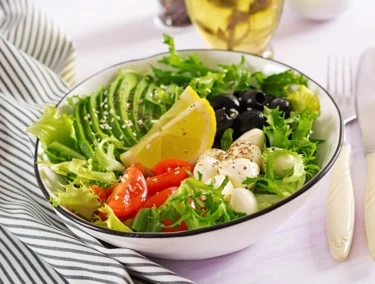
It may take some time to return to your pre-appendicectomy diet. Eating smaller portions more frequently, such as 6 to 8 small meals throughout the day, can aid in the gradual return to the regular diet. It is critical to drink plenty of water and caffeine-free fluids after an appendectomy to avoid constipation and bowel problems. Include foods that contain bromelain, an enzyme that aids in pain relief and wound healing3. Zinc deficiency in the diet can interfere with the body’s natural healing mechanism. Choose food that is healthy and easy to digest.
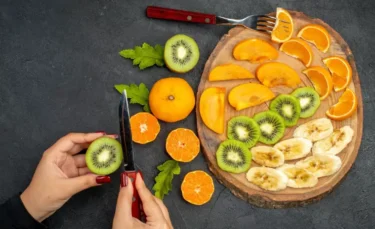
Clinical studies4 have shown that vitamin C plays an important role in all aspects of wound healing, from neutrophil clearance to scab formation. To ensure a speedy recovery from internal wounds, a vitamin C-rich diet is essential. The highest sources of ascorbic acid or vitamin C are amlas, strawberries, limes, kiwi fruits, red capsicum, guavas, oranges, grapefruit and cauliflower.
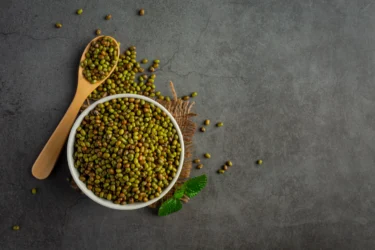
Mung beans or green grams contain antibacterial agents, which make them an ideal post-surgery recovery food. They are regarded as stomach-cooling food. Doctors and practitioners recommend eating one tablespoon of rinsed and soaked green gram every day, either raw, steamed or lightly microwaved. For best results, consume it three times per day.

Rest is essential after appendix surgery, but so is light activity. When you’re ready, gradually increase your activity level. Short walks, even around the house, are a great place to start and can help prevent pneumonia and blood clots. An added benefit is that being active encourages your digestive system to return to normalcy sooner. Constipation can be excruciating, so include some doctor-approved exercise in your daily routine, drink plenty of fluids and take stool softeners if your doctor recommends them.
Although appendicitis is usually confused with regular abdominal pain, consulting a physician for physical examination, undergoing imaging tests like ultrasound and CT scan in case of severe and persistent sudden abdominal pain is crucial.
Dr. Ashish Bajaj, M.B.B.S. M.D. in Clinical Pharmacology and Toxicology.

If you recently had an appendectomy, you will most likely be in bed for an extended period of time. Before attempting any exercises while in bed, consult your doctor. If your doctor approves, begin with simple leg pumps and lifts to improve blood flow and circulation in the lower parts of your body. Furthermore, performing bed exercises can help reduce the likelihood of blood clots forming in your lower extremities. Perform these exercises every hour while lying in bed.

After a few weeks of rest, begin gentle walking and avoid strengthening exercises. Begin by sitting on the edge of a bed with your feet hanging off the edge. Lift your legs up until they are parallel to the floor, keeping your back straight and core tight. Hold for a few seconds before slowly lowering your legs back to their original position. Repeat until you’re exhausted.
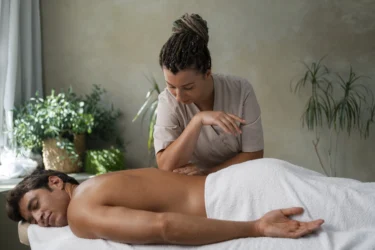
A person may experience severe pain following surgery. Massage alleviates acute pain by promoting recovery and relieving tension. It causes friction between the skin and the fingers, which increases blood flow to the area. A post-appendectomy massage at home can be very relaxing and help to relieve tension. Make sure you consult your doctor about the recovery and get a massage once allowed.

When a person undergoes surgery, the body’s natural response is to halt normal activity so that it can focus on uninterrupted healing. That means you’ll be sleeping a lot more than usual for at least the first week or so after surgery. This period of reduced physical activity is critical, especially after abdominal surgery, either open or laparoscopic. This is because your surgeon had to cut through the visible external muscles and the innermost layer of the abdominal wall, which holds your internal organs in place. If you resume your normal activities before the inner layer has healed, you may develop a hernia, in which part of your intestine squeezes out of the abdominal cavity.
Appendicitis is a serious condition and a surgery might be needed as soon as possible. The post-surgery recovery stage is equally important as the body needs to heal itself. During this period, make sure that you get plenty of rest, eat well and slowly incorporate your daily activities back into your life.
If the abdominal pain is due to appendicitis, you should never rely on home remedies, as there are high chances that it might burst and can cause complications. Seek immediate care from a general surgeon to prevent complications.
Dr. Nikhil Yadav, MBBS MD,CCEBDM
Also Read: Natural Home Remedies For Stomach Ulcers
Appendicitis can be caused by infections in your digestive tract, such as viruses, bacteria or parasites. It could also happen if the tube connecting your large intestine and appendix becomes blocked or trapped by stool or worms. Tumours can occasionally cause appendicitis. The appendix becomes painful and swollen as a result.
Appendicitis usually begins with a pain in the middle of your stomach (abdomen) that comes and goes. Within hours, the pain spreads to the lower right side of the abdomen, where the appendix is usually found and becomes constant and severe. Pressing on this area, coughing or walking may aggravate the pain.
Some of the fruit seeds consumed are naturally excreted from the body, while others can cause appendicitis. Appendicitis has been linked to the seeds of vegetables and fruits such as cacao, orange, melon, barley, oat, fig, grape, date, cumin and nut.
Surgery to remove the appendix is the standard treatment for appendicitis. This procedure is known as an Appendicectomy. Antibiotics are sometimes used while the diagnosis is being made, but most doctors agree that antibiotics cannot cure appendicitis.
Disclaimer: The information provided here is for educational/awareness purposes only and is not intended to be a substitute for medical treatment by a healthcare professional and should not be relied upon to diagnose or treat any medical condition. The reader should consult a registered medical practitioner to determine the appropriateness of the information and before consuming any medication. PharmEasy does not provide any guarantee or warranty (express or implied) regarding the accuracy, adequacy, completeness, legality, reliability or usefulness of the information; and disclaims any liability arising thereof.
Have you noticed small, black holes in your teeth? Did you dismiss them as just stains? They may not be just stains; they can be early signs of tooth decay. Since childhood, we have been told not to eat sweets and chocolates, as they may destroy our teeth. The bacteria in our mouth use the sugar and starch from our food to produce acid that destroys the tooth. The small spot can turn into a big hole in no time, cause pain, and if it is not treated in time, you might even lose your tooth1. This decay is commonly referred to as cavities, also known as dental caries. You can prevent cavities by brushing and flossing your teeth properly2.
There are plenty of bacteria in the mouth, some are helpful to us, and others cause harm. These harmful bacteria are responsible for the decay of teeth. The bacteria together form a film (plaque) and participate in making acid from the food that you eat, mainly from sugars and starches. This acid forms and damages the teeth, which we see as decay. As part of a natural process, our teeth keep losing and regaining minerals. If we do not care for our teeth properly, it results in the loss of more minerals than we can regain, thus leading to tooth decay1.
There are a few signs that you should look out for if you think that you have tooth decay. The symptoms of tooth decay are:
The best way to avoid the decay of teeth is to take care of them by maintaining proper oral hygiene. All the remedies suggested here are to maintain oral health and prevent the formation of cavities. The following are a few home remedies for better and healthier teeth.
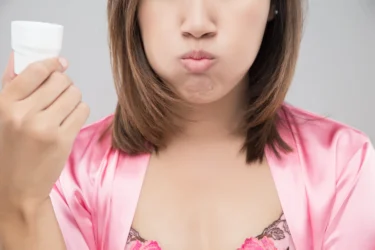
Oil pulling is an Ayurvedic procedure that helps maintain oral hygiene. In one of the many studies conducted, it was seen that oil pulling reduces the number of bacteria in the mouth and decreases plaque formation, which might prevent tooth decay in the long run. In this procedure, a small amount of coconut oil, sesame oil, or sunflower oil, in its pure form (preferably cold-pressed), is used to swish around the mouth, ensuring that all the teeth are covered. This procedure is to be done in the morning on an empty stomach before brushing your teeth3. There is a need for more research regarding the benefits of oil pulling; nonetheless, it is being used.
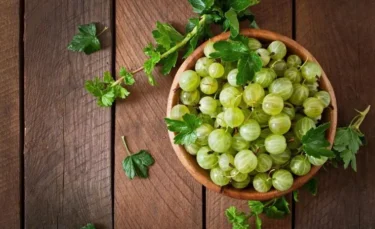
Amla is a herb that is commonly used in Ayurveda. It is a fruit and can be used in the form of a decoction and for rinsing the mouth, as it is generally known to be good for oral health. Not only that, we can consume a little bit of amla daily to reap its long-term benefits for teeth4. As amla helps maintain healthy teeth, it may also be beneficial in preventing tooth decay.
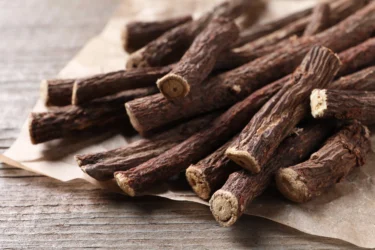
Liquorice is also called the ‘sweet herb’, Yashtimadhu (Sanskrit), or mulethi. In recent years, researchers have been extensively studying the benefits of liquorice. In one such study5 conducted, it was found that liquorice contains bioactive compounds that are effective in destroying the bacteria Streptococcus mutans or S. mutans, responsible for causing tooth decay. Therefore, liquorice may prevent the decay of the tooth. Furthermore, we can chew the root of liquorice to protect our teeth from cavities.
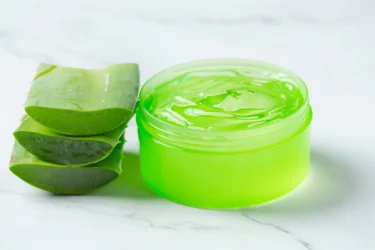
Aloe vera gel has a wide range of uses. It has anti-microbial (germ-killing) and anti-inflammatory (inflammation-reducing) properties due to the presence of bioactive compounds. A study6 has shown that aloe vera gel effectively kills and removes bacteria (S. mutans and Lactobacillus spp.), which are known for their involvement in cavity formation (dental caries). In this way, aloe vera gel might protect the tooth from decay. It can be used by making juice and drinking it daily. It can also be used as a toothpaste to brush teeth daily to receive its benefits.
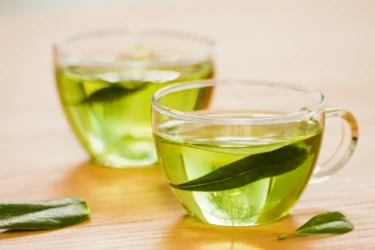
Green tea has anti-bacterial properties; thus, it is said to lower the number of bacteria in the mouth that have the potential to cause cavities. It also contains a high amount of fluoride. Fluoride is a mineral that protects teeth from decay by helping them to regain minerals. Researchers8 have found that green tea prevents caries (anti-cariogenic) in animal models. It might be because of its anti-bacterial activity due to the presence of certain substances. Studies in humans have been inconclusive; hence, further research is needed to conclude. You can consume green tea as a beverage by using its leaves or a teabag to brew a hot cup of green tea.
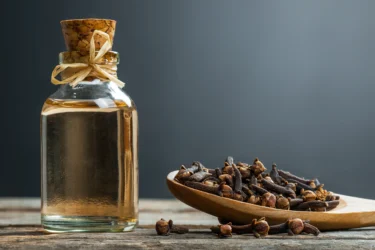
An experiment was conducted to understand the effect of clove oil on tooth decay by preventing decalcification (loss of minerals from teeth). In this experiment, it was found that clove oil-treated teeth showed less mineral loss when subjected to acids, which can destroy teeth. Its action might be similar to that of fluoride in preventing tooth decay7. Further studies need to be conducted to prove its use as a tooth decay-preventing agent in humans. Clove oil is a common component of many kinds of toothpaste. You can use it by mixing a little clove oil in your toothpaste and brushing your teeth using this paste twice daily.
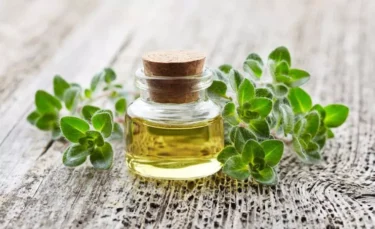
Oregano oil is an essential oil. It has the property of destroying various microorganisms like bacteria, fungi, etc. Therefore, its potential to kill tooth-decaying bacteria was evaluated in a study. This study9 showed that when oregano oil was added to a toothpaste, which was already efficient in killing bacteria, its efficiency increased twofold. Thus, it helps in the prevention of tooth decay. You can mix oregano oil with your regular toothpaste and use it to brush your teeth daily.
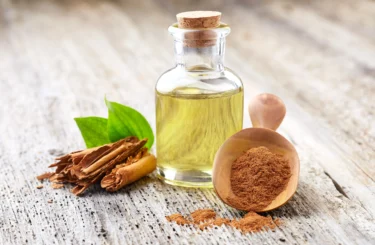
In the same study9 mentioned above, the activity of the oil from one of the cinnamon species, Cinnamomum cassia (Chinese cinnamon), was also studied. The bacteria-destroying activity of cinnamon oil was evident. Thus, cinnamon oil might be used in the prevention of dental cavities. You can make use of this oil in the same way by mixing it in toothpaste and brushing your teeth daily.
You should seek help from a dentist if:
Also Read: Simple Tips You Can Follow for Heartburn Relief!
The best way to protect your teeth from getting damaged due to tooth decay is to keep them clean. Cavities can occur when the bacteria present in your mouth use the food particles left behind from improper cleaning to make acid, which damages the teeth. You might see a cavity and experience sensitivity and pain. Sometimes, there can also be an infection of the teeth and mouth. You can prevent the formation of cavities by the use of a few home remedies, such as oil pulling, clove oil, aloe vera gel, and green tea. However, if you have a cavity, pain, or swelling, notice signs of infection, experience bleeding from gums, or have difficulty chewing, you should pay a visit to your dentist. Prevention is always better than a cure, and you can do it by simply following proper oral hygiene. So, let us make sure that we can take care of our teeth and protect them from decay.
Also Read: Simple Home Remedies For Dry Throat
No, black holes in your teeth may be tooth decay. Consult your dentist to be sure.
No, tooth brushing cannot help your decay go away. However, it can prevent tooth decay.
Yes, in many studies9, clove oil was found to have similar effects to fluoride in preventing tooth decay. Further research is required to be sure of it.
Yes, green tea has high fluoride content and anti-bacterial properties, both of which are known to be beneficial in preventing tooth decay.
1. National Institute of Dental and Craniofacial Research. Tooth decay [Internet]. Bethesda (MD): National Institute of Dental and Craniofacial Research; [cited 2025 May 28]. Available from: https://www.nidcr.nih.gov/health-info/tooth-decay
2.Centers for Disease Control and Prevention. About cavities (tooth decay) [Internet]. Atlanta (GA): Centers for Disease Control and Prevention; 2024 May 15 [cited 2025 May 28]. Available from: https://www.cdc.gov/oral-health/about/cavities-tooth-decay.html
3. Shanbhag VKL. Oil pulling for maintaining oral hygiene – A review. J Tradit Complement Med [Internet]. 2017 Jan [cited 2022 May 26];7(1):106-9. Available from: http://dx.doi.org/10.1016/j.jtcme.2016.05.004
4. Singh A, Purohit B. Tooth brushing, oil pulling and tissue regeneration: A review of holistic approaches to oral health. J Ayurveda Integr Med [Internet]. 2011 Apr [cited 2022 May 26];2(2):64-8. Available from: https://www.ncbi.nlm.nih.gov/pmc/articles/PMC3131773/pdf/JAIM-2-64.pdf
5. Sidhu P, Shankargouda S, Rath A, Ramamurthy PH, Fernandes B, Singh AK. Therapeutic benefits of liquorice in dentistry. J Ayurveda Integr Med [Internet]. 2020 Oct [cited 2022 May 26];11(1):82-8. Available from: https://www.ncbi.nlm.nih.gov/pmc/articles/PMC7125382/pdf/main.pdf
6. Bałan BJ, Niemcewicz M, Kocik J, Jung L, Skopińska-Różewska E, Skopiński P. Oral administration of Aloe vera gel, anti-microbial and anti-inflammatory herbal remedy, stimulates cell-mediated immunity and antibody production in a mouse model. Cent Eur J Immunol. 2014 Jun 27;39(2):125–130. doi:10.5114/ceji.2014.43711. PMID: 26155113; PMCID: PMC4440021. Available from: https://www.ncbi.nlm.nih.gov/pmc/articles/PMC4440021/
7. Marya CM, Satija G, Avinash J, Nagpal R, Kapoor R, Ahmad A. In Vitro Inhibitory Effect of Clove Essential Oil and Its Two Active Principles on Tooth Decalcification by Apple Juice. Int J Dent [Internet]. 2012 May [cited 2022 May 26];2012:759618. Available from: https://www.ncbi.nlm.nih.gov/pmc/articles/PMC3432374/pdf/IJD2012-759618.pdf
8. Melok AL, Lee LH, Mohamed Yussof SA, Chu T. Green tea polyphenol epigallocatechin-3-gallate-stearate inhibits the growth of Streptococcus mutans: a promising new approach in caries prevention. Dent J (Basel). 2018 Aug 6;6(3):38. doi:10.3390/dj6030038. PMID: 30082585; PMCID: PMC6162448. Available from: https://www.ncbi.nlm.nih.gov/pmc/articles/PMC6162448/
9. de Oliveira Carvalho I, Purgato GA, Píccolo MS, Pizziolo VR, Coelho RR, Diaz-Muñoz G, Alves Nogueira Diaz M. In vitro anticariogenic and antibiofilm activities of toothpastes formulated with essential oils. Arch Oral Biol. 2020 Sep;117:104834. doi:10.1016/j.archoralbio.2020.104834. PMID: 32663696. Available from: https://pubmed.ncbi.nlm.nih.gov/32663696/
Disclaimer: The information provided here is for educational/awareness purposes only and is not intended to be a substitute for medical treatment by a healthcare professional and should not be relied upon to diagnose or treat any medical condition. The reader should consult a registered medical practitioner to determine the appropriateness of the information and before consuming any medication. PharmEasy does not provide any guarantee or warranty (express or implied) regarding the accuracy, adequacy, completeness, legality, reliability or usefulness of the information; and disclaims any liability arising thereof.
Behind every school-going child with an itchy head is a very worried parent, dreading that the child might have lice. Head lice are prevalent in school-going children. It can affect anyone. Head lice are small insects that crawl into the hair and make it their home. They then suck up blood from the head and lay eggs known as nits. These stick to hair shafts so tightly that it becomes tough to pull them out. When there is an infestation of lice in the head, it is known as pediculosis. There are many ways that we can get rid of these little insects1. Let’s explore more about lice and how you can manage them at home.
You can get infested by lice, also known as Pediculus humanus capitis, in the hair of your head when you come in close head-to-head contact with anyone who has head lice. You can even get it by sharing objects such as combs, hats, caps and hairbrushes with a person infested with head lice. You can see them as tiny nits attached to your hair. They might look like dandruff, but unlike dandruff, they cannot be shaken up or brushed off1.
Lice are more common in females than males and more frequently seen in Caucasians than African-Americans1. Some of the symptoms that might help you to recognise head lice infestation are:
Head lice are a common problem that any of us can face. Unfortunately, most of these remedies do not have enough scientific evidence to back them. Nevertheless, they are being used by people. Here are a few home remedies that you may find beneficial for managing head lice infestation.
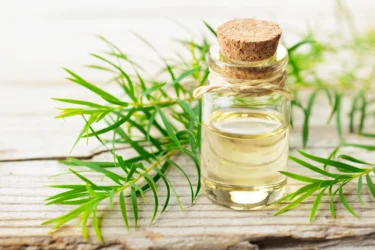
Tea tree oil possesses various beneficial properties, including the activity against various microbes. It can effectively destroy bacteria, viruses and fungi. It also has the property of eliminating insects. Tests were done in the laboratory to see if tea tree oil was effective against head lice. It was found that tea tree oil was indeed effective and resulted in the destruction of lice and their eggs2. You can make use of tea tree oil by taking a few drops of it and applying it to your scalp.
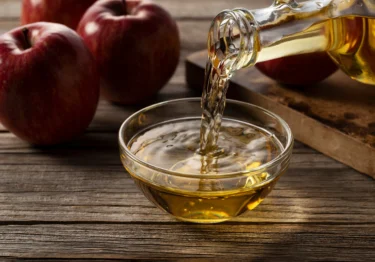
There is very little scientific evidence supporting the use of vinegar as a remedy for head lice. Though it is commonly recommended by people and has been used for a long time for this purpose, it was found to be less effective in destroying lice and stopping their eggs from hatching when compared to other home remedies3. Nevertheless, you can try this remedy, as some people found it to be effective. You can use a few drops of vinegar to apply to your scalp and leave it in for a few minutes. After that, make sure that you wash your hair thoroughly.
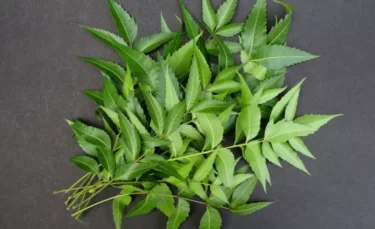
It is claimed that neem is effective in killing head lice. Neem is a part of many shampoos and oils that claim to be effective against head lice. Neem is effective against many insects, but the exact way in which it acts on lice is still not known4. You can use it as a remedy for lice by simply making a juice of neem leaves and applying it onto your head, leaving it for 10-15 minutes and washing it. You can also use neem leaves in the form of a thick paste or boil them in oil and apply to your scalp.
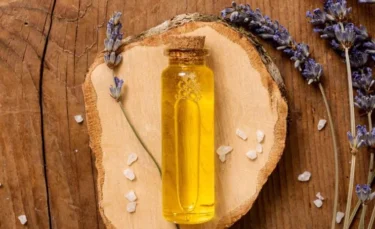
Essential oils are found to be effective in the elimination of head lice. A clinical trial5 showed that lavender oil, when mixed with tea tree oil, was effective in killing head lice. The exact mechanism of action is not known, but essential oils, especially lavender oil and tea tree oil mixture, were found to have more than 97% efficiency in the termination of head lice. You can make use of this by simply mixing the two oils and applying them to your scalp. It can be kept overnight or washed away after a few hours.
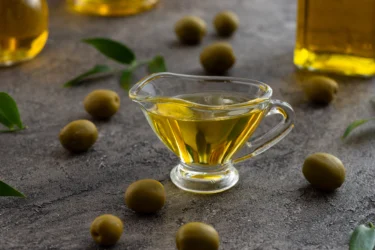
Various unconventional management options are used for head lice infestation, and oil-based remedies are one among them. The given explanation for the use of olive oil as a remedy is that it prevents movement (immobilisation) and suffocates the lice in the head. However, there is no scientific evidence to back this information, yet it is being used6. You can also use this remedy. It is a straightforward home remedy in which you just have to apply olive oil on your head and leave it overnight.
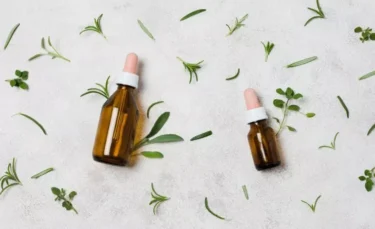
In studies7, it was found that eucalyptus oil was effective in eliminating head lice and their eggs. It was also found to be safe for use and caused only mild itching in a few people. In the same study7, eucalyptus oil was compared to another product and was found to be more effective in killing head lice. Therefore, it might be used as a remedy for head lice infestation. You can take a few drops of eucalyptus oil and apply them to your scalp. You can also mix it with other oils and use it.
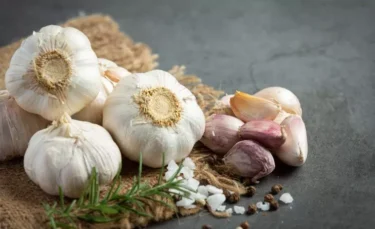
In Ayurveda, garlic is used in the management of head lice8. You can utilise this remedy as well. You can take a few cloves of garlic and make them into a paste. You have to add a little bit of lemon juice to this paste. Mix it well and apply this mixture to the roots of your hair. Leave it for one to two hours, and then rinse it properly with water. To reap the benefits of this remedy, you have to use it diligently.
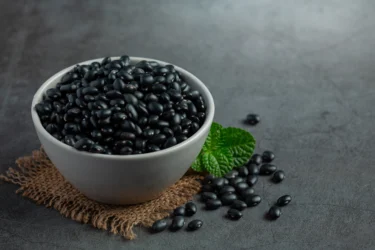
Masha is also a remedy that is used in Ayurveda. It is also known as Jangli Urad in Punjabi and Mashvan or Mashoni in Hindi. To use Masha as a remedy for head lice, you have to cook these seeds in a little bit of sesame oil. Cook these seeds on low flame for a few minutes. Apply this oil to your head regularly for some time to see its beneficial effects for managing head lice.
Onion oil, which has the antibacterial and antifungal properties of onion, is helpful in removing lice eggs from the hair. Besides, it nourishes the hair and also aids in growth, so using it is even better.
Dr. M.G. Kartheeka, MBBS, MD (Pediatrics)
If you cannot get rid of the lice even after using home remedies, you should visit a doctor who might prescribe medicated shampoos or oils. However, if the problem persists even after using prescribed oils or shampoos, you should revisit your doctor and inform them about the severity1. You should seek immediate medical advice if you see any signs of infection, such as:
Head lice do not die on their own if left untreated. If you let it stay untreated, it might complicate and lead to more severe itching and discomfort as the lice multiply rapidly without treatment.
Dr Ashish Bajaj, M.B.B.S, M.D. in Clinical Pharmacology and Toxicology
Itching in your head may be due to a lice infestation. Head lice can infest anybody, and it is more common in school-going children, as they are more likely to share combs, hats, etc., and come in head-to-head contact with others. There are a few home remedies, such as lavender oil, eucalyptus oil and others that you can use to get rid of this infestation. You should seek medical advice if head lice persist even after using home remedies. Your doctor might prescribe medicated shampoos or oils for use.
Yes, anyone can get head lice if they come in head-to-head contact with a head lice-infested individual or share objects such as hairbrushes and hats with them.
No, lice are tiny crawling insects that can infest your head hair. They can stay in your head, suck blood and lay eggs in your hair. The insect’s name is lice (also known as Pediculus humanus capitis).2 It is not a viral infection.
Yes, men can get infested by head lice just like anybody else. However, it is more common in women than in men.
There is a possibility that the specks that look like dandruff but do not go away on brushing or shaking are known as nits. Nits are the eggs of head lice. To be sure, kindly consult your doctor.
Yes, neem is used as a home remedy for head lice. The exact way in which it acts is not known. It is also an ingredient of various shampoos and oils that claim to be effective against head lice.
1. Centers for Disease Control and Prevention. About head lice [Internet]. Atlanta: CDC; 2024 Jun 4 [cited 2025 May 22]. Available from: https://www.cdc.gov/lice/about/head-lice.html
2. Di Campli E, Di Bartolomeo S, Pizzi PD, Di Giulio M, Grande R, Nostro A, et al. Activity of tea tree oil and nerolidol alone or in combination against Pediculus capitis (head lice) and its eggs. Parasitol Res [Internet]. 2012 July 31 [cited 2022 May 24];111(5):1985-92. Available from: https://www.ncbi.nlm.nih.gov/pmc/articles/PMC3480584/pdf/436_2012_Article_3045.pdf
3. Johnston CS, Gaas CA. Vinegar: Medicinal Uses and Antiglycemic Effect. MedGenMed [Internet]. 2006 May 30 [cited 2022 May 24];8(2):61. Available from: https://www.ncbi.nlm.nih.gov/pmc/articles/PMC1785201/
4. Brown CM, Burgess IF. Can neem oil help eliminate lice? Randomised controlled trial with and without louse combing. Adv Pediatr Res [Internet]. 2017 June 30 [cited 2022 May 24];4:9. Available from: https://www.researchgate.net/publication/318347702_Can_neem_oil_help_eliminate_lice_Randomised_controlled_trial_with_and_without_louse_combing
5. Barker SC, Altman PM. A randomised, assessor blind, parallel group comparative efficacy trial of three products for the treatment of head lice in children–melaleuca oil and lavender oil, pyrethrins and piperonyl butoxide, and a “suffocation” product. BMC Dermatol. 2010 Aug 20;10:6. doi: 10.1186/1471-5945-10-6. PMID: 20727129; PMCID: PMC2933647. Available from: https://pubmed.ncbi.nlm.nih.gov/20727129/
6. Mazurek CM, Lee NP. How to manage head lice. West J Med [Internet]. 2000 May 1 [cited 2022 May 24];172(5):344-5. Available from: https://www.ncbi.nlm.nih.gov/pmc/articles/PMC1070891/pdf/wjm17200342.pdf
7. Greive KA, Barnes TM. The efficacy of Australian essential oils for the treatment of head lice infestation in children: A randomised controlled trial. Australas J Dermatol [Internet]. 2018 Dec 30 [cited 2022 May 24];59(2):e99-105. Available from: https://www.ncbi.nlm.nih.gov/pmc/articles/PMC6001441/pdf/AJD-59-e99.pdf
8. Samiasih A, Dianingsih A, Ferdisa RJ, Wati F, Hartiti T, Ernawati E, Yanto A. The effectiveness of garlic, black turmeric, and red betel vine solutions to maintain scalp hygiene (pediculicide efficacy test toward head lice). South East Asia Nursing Research. 2020 Dec 30;2(4):132–138. doi: 10.26714/seanr.2.4.2020.1-7. Available from: https://www.researchgate.net/publication/348090555_The_effectiveness_of_garlic_black_turmeric_and_red_betel_vine_solutions_to_maintain_scalp_hygiene_pediculicide_efficacy_test_toward_head_lice
Disclaimer: The information provided here is for educational/awareness purposes only and is not intended to be a substitute for medical treatment by a healthcare professional and should not be relied upon to diagnose or treat any medical condition. The reader should consult a registered medical practitioner to determine the appropriateness of the information and before consuming any medication. PharmEasy does not provide any guarantee or warranty (express or implied) regarding the accuracy, adequacy, completeness, legality, reliability or usefulness of the information; and disclaims any liability arising thereof.
Pinworms are parasitic worms that survive in the rectal and intestines of the infected person. Pinworms can infect people of all ages, especially children. Pinworms, also known as threadworms, are white/light grey tiny worms that cause the common infection known as enterobiasis, found more commonly in children than adults. Symptomatic pinworm infection is an issue of concern, though the treatment for pinworms is simple1,2.
Family members and people taking care of infected children are at a higher risk of infection. The most common sources of pinworm infection are preschools, schools and day-care centres1. If anyone in your family is infected with pinworms, you should get help from a doctor to get a diagnosis and treatment. You can also try some home remedies; read along to find some home remedies to help take care of pinworms at home.
The eggs of pinworms, when swallowed, can cause infection3. The infection spreads in the following manner:
If you have a pinworm infection, you can notice the following symptoms:
The following home remedies can be used for dealing with pinworm infection at home:
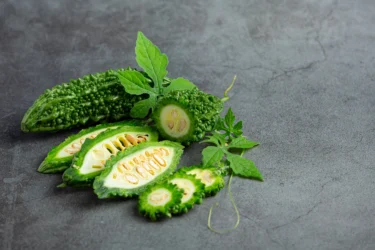
Consuming bitter melons (bitter gourds) every day for about one and a half weeks can help eliminate pinworm4. You can take two bitter gourds and remove the seeds. Then, extract the juice and drink small portions of this juice three to four times a day.
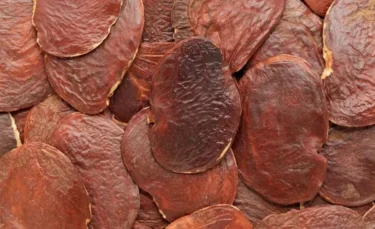
Palasha seeds also help in getting relief from pinworm infestation5. You can consume palasha seeds powder along with castor oil before going to bed.
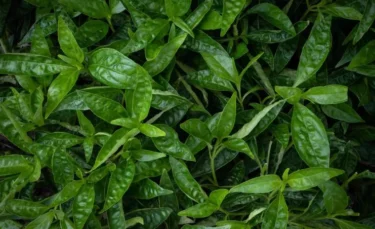
Kalmegh is a herb that has several benefits, including the ability to help provide relief from intestinal worms and pinworms in particular6. You may make a paste of kalmegh and consume this paste early morning on an empty stomach for a week.

Garlic contains sulphur, which helps expel worms7. Take garlic, cloves and carrot, and extract the juice from all three components together. You can consume this mixture frequently throughout the day.
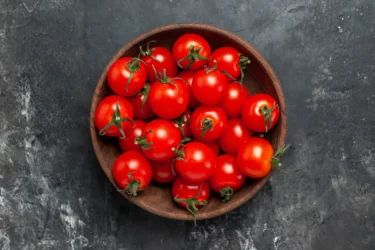
The cherry tomatoes are beneficial against pinworm infection as they can help to control the infection8. To obtain benefits, take one cup of cherry tomatoes and mix them with ground black pepper and a small amount of salt. Consume on an empty stomach for a few days.

Parijat flowers help to control and kill pinworms. They are very beneficial as they also wipe out worm eggs from the stomach9. The flowers can be consumed in the form of curry during the winter.
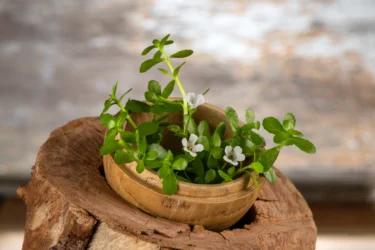
Brahmi has the ability to kill pinworms. You can take Brahmi in the form of the extract on an empty stomach in the morning for a few weeks. It is also being used by Ayurvedic practitioners to treat pinworm infections10.
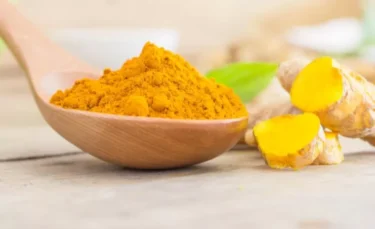
Pinworms can be managed with dry turmeric powder11. You can also make turmeric tea by adding a small amount of turmeric to one cup of hot water and boiling it for five to 10 minutes. Drink every day to get the benefits.
Other possible ways to prevent a pinworm infection are by ensuring cleanliness in the following ways:
Also Read: Best Home Remedies for Burning Feet
You must keep the following points in mind:
Also Read: Best Home Remedies for Burning Feet
Parasitic worms called pinworms or threadworms survive in the rectal regions of the infected person. Though pinworms can infect people of all ages, children are more commonly affected as they are in close social contact with other kids who may be infected. Also, they have habits like nail-biting and may not wash their hands properly before meals. You can avoid pinworm infection by maintaining good hygiene. Several home remedies like garlic, bitter melons, turmeric, kalmegh, etc., may help you deal with pinworm infection. Rarely, there may be some serious complications due to pinworms. Therefore, you must consult a doctor if the problem persists even after trying the home remedies.
Yes, pinworm infection can spread from linen and undergarments used by an infected person, inhaling eggs that travel through the air and through pets as they carry eggs on their fur.
Though rare, some serious complications of pinworm infestation are urinary tract infections, gastrointestinal and abdominal problems, appendicitis (a condition in which the appendix becomes inflamed and painful), inflammation of the vagina and the lining of the uterus, and bacterial infections.
Yes, people having pinworm infections may have trouble sleeping, and this may further cause weight loss and fatigue.
Yes, there are a few effective home remedies to deal with pinworm infections, such as Brahmi, garlic, cherry tomatoes, turmeric, parijat, etc. Though complications related to pinworm infestation are rare, you must consult a doctor if the problem persists even after following the home remedies.
Disclaimer: The information provided here is for educational/awareness purposes only and is not intended to be a substitute for medical treatment by a healthcare professional and should not be relied upon to diagnose or treat any medical condition. The reader should consult a registered medical practitioner to determine the appropriateness of the information and before consuming any medication. PharmEasy does not provide any guarantee or warranty (express or implied) regarding the accuracy, adequacy, completeness, legality, reliability or usefulness of the information; and disclaims any liability arising thereof.
Is your neck darker than the rest of your body? Do you think it will get corrected by scrubbing, but it doesn’t? Well, a dark neck might be due to a range of different reasons. It can be due to some underlying medical conditions, such as Acanthosis nigricans1. If you have this condition, you may notice darkening of the folds in your neck. The darkening can also be in the folds of your armpits, groin or under your breast.
What might just look like a darkening of the neck can turn out to be something else when you take a closer look. So, read on and make sure you get to the root of your neck darkening and manage it with the home remedies that we have presented.
There are many reasons that can cause the darkening of your neck, such as:
When our skin is exposed to the sun for too long, it can become darker. This is called sun-tan. This occurs due to the melanin present in our skin, which protects our skin cells from damage by the sun’s ultraviolet rays. Melanin is a pigment responsible for the darkening of the skin. As the neck is an area that is exposed to sunlight, there might be a chance for the darkening of the neck to be caused by sunlight exposure.
This condition may develop:
You might have had this condition since birth, i.e. it might be congenital. The symptoms of Acanthosis nigricans usually develop slowly. It might indicate cancer if the symptoms develop quickly, as darkening of the neck may rarely be a sign of cancer, but it is possible.
This is a rare condition that affects one person in every one million. One of the characteristic features of this disease is the pigmentation (or darkening) of the neck in a ‘lacy’ pattern along with two other features, which are: white patches in the mouth (oral leukoplakia) and abnormally shaped finger and toenails (nail dystrophy)2.
It is a condition in which there is the formation of a crust on the neck due to the collection of oil, dust, bacteria and dead cells. This condition generally goes unnoticed or undiagnosed. This also causes the darkening of the neck3.
The exact cause for this condition is unknown, but occupational allergy to cobalt seems to have some role in it. It is an uncommon condition that can be recognised by the occurrence of dark-coloured patches on the neck and other parts of the body4.
The presence of dark, velvety patches on the neck, underarms and elbows indicates acanthosis nigricans. Although it may seem like a cosmetic issue, it is a significant sign of insulin resistance and requires an endocrinologist’s assessment. Lifestyle changes and weight management can not only improve these symptoms but may also lower the risk of metabolic conditions like diabetes.
Dr. Arpit Verma, MBBS, MD (Pharmacology)
Neck darkening is a symptom that can occur due to many causes, as stated above. Some of the features that might help you recognise it are:
These symptoms may appear slowly. If they appear suddenly, it might be an indicator of cancer. You should consult a doctor at the earliest.
Rarely, you might also have the following symptoms:
Treating the underlying cause of the dark neck might lead to the lightening of the patches. However, there are a few home remedies that you can try to lighten the darkened patches of skin on your neck.
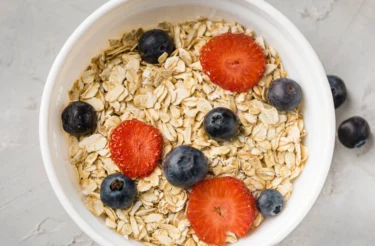
Oats have antioxidant activity. It also helps cleanse, moisturise, and soothe the skin5. These activities of oats might be beneficial for the dark neck skin. You can use oats to lighten the dark neck by taking a few spoons of oats and grinding them. Ground oats can also be used directly. You need to mix this with a little tomato puree until it reaches a paste-like consistency. Apply this to the darkened areas and let it sit for a while. Then wash it off using water. You can use this pack regularly to get the results.
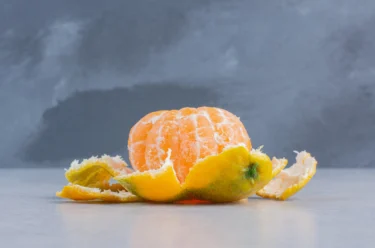
Studies6 have shown that orange peel has skin-whitening properties. This might be due to its antioxidant properties or its activity against a compound called tyrosine, which plays a role in skin darkening. For utilising this remedy, you can use orange peel powder that is readily available, or you can sun-dry the orange peels and grind them to obtain a powder. This powder is to be mixed with either whole milk or orange juice to form a paste. You can apply this paste to the dark areas of your neck and leave it on for 10-15 minutes. After that, you can wash it off.
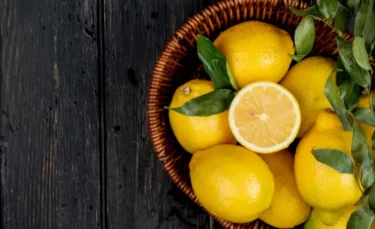
Lemon has antioxidant activity, which may help with skin lightening. In a study7, it was observed that it might also have activity against tyrosine. Therefore, it might be used as a skin-lightening agent. You can use the lemon juice directly for application if you have normal skin. But if your skin is sensitive, mix equal parts of rose water with lemon juice and use it for application on your neck. This should be kept for 15-20 minutes, after which it can be washed off using cold water. Applying this daily might be beneficial for your dark neck.
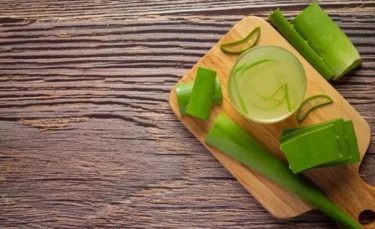
Aloe vera has various benefits for the skin8. It also has the potential to lighten skin9 and inhibits the action of many enzymes responsible for melanin production (a pigment that causes skin darkening). Thus, it can be used to lighten a dark neck.
You can make use of a fresh aloe vera leaf for this remedy. A fresh leaf of aloe vera can be cut open, and the gel can be applied directly onto the dark regions of the neck. While applying the gel, gently massage the neck. Leave the gel for 10-15 minutes. Use cold water to wash off the gel after that. This has to be followed daily for the effects to be visible.
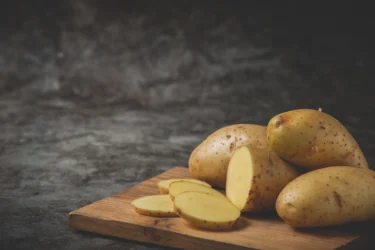
Potatoes exhibit natural skin-lightening activity10. In skin and face packs, raw potatoes can work well. They also possess the property of cleansing the skin. Potatoes can also help soothe sunburn on the skin. Therefore, they may be used for managing dark necks. You have to extract the juice of a potato for this remedy. The juice of a potato should be mixed with a little bit of lemon juice and applied to the neck where you see darkened areas. It should be left for 10-15 minutes. Wash it off with cold water after that. This remedy has to be followed daily to gain the benefits.
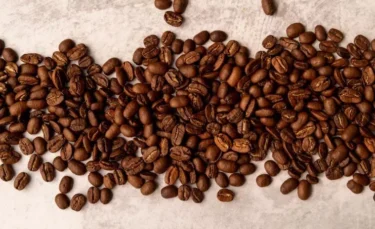
Coffee beans have a natural skin-lightening effect11. They also act as an antioxidant and decrease the production of melanin by preventing the activation of tyrosine. This effect of coffee beans can be utilised for managing dark necks. You can use coffee beans by making a coarse powder of them and mixing it with a little water to form a paste. This paste can be applied to the dark areas of the neck and left for 10-15 minutes. After this, wash it, dry it, and moisturise. Apply this pack once a week to see its beneficial effects.
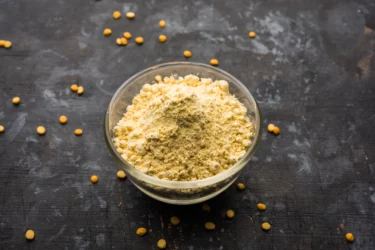
Gram flour is commonly known as besan. It has been used as an ingredient in homemade skincare and hair products for a long time. It helps lighten the skin and also cleanses it. Take a few spoons of gram flour and add a little bit of turmeric to it. You can add either water or curd to it and mix it until it forms a thick paste. Mix it well and ensure there are no lumps. You can apply this paste onto your neck and leave it until it dries. After it dries, wash it off, dry the area properly and moisturise it. Following this remedy, two to three times a week, is necessary to see its beneficial effects.
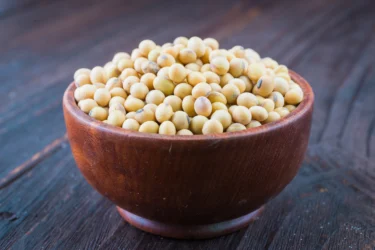
In laboratory studies12, it was found that soy has skin-lightening effects. However, further human studies are required to be absolutely sure of the effects. For this remedy, mix soy powder or flour and make a thick paste by adding water or yoghurt. Apply this paste onto your neck and leave it until it dries. After it dries, wash it off with cold water, dry the area and moisturise your skin using a moisturiser. You can use this home remedy on a daily basis until you see a difference.
Insulin resistance can cause acanthosis nigricans (one of the common causes of a dark neck). A good exercise regimen (cardio and strength training) can help decrease insulin resistance and eventually lighten the dark neck.
Dr. Nikhil Yadav, MBBS MD,CCEBDM
Also Read: Home Remedies to Keep Dark Circles Away!
You should seek immediate medical help if the symptoms of the dark neck appear suddenly. Though it is rare, it might be an indicator of cancer. A doctor will conduct the necessary examinations, such as biopsy and other tests, to make a diagnosis. If you notice any other symptoms along with darkening of the neck, like irregular darkened patches, poor or irregular growth of nails or white patches inside your mouth, please make sure that you visit a doctor and get it checked. They will be able to diagnose your condition better and give you proper medical advice.
The darkening of the neck may seem like a small thing and may even go unnoticed. Still, sometimes it can be an indicator of an underlying medical condition like hormonal issues, diabetes or very rarely, even cancer. You might notice velvety skin, darkened patches, skin tags, and itching in your neck. It can be an indicator of a few rare conditions like dyskeratosis congenita, Acanthosis nigricans, etc. Treating the condition can help deal with neck darkening. However, you can try using a few home remedies, such as gram flour, aloe vera, and coffee, and see what suits you best. You should never hesitate to consult your doctor to get things checked out and cleared.
Also Read: Best Home Remedies For Smelly Armpits
No. If the darkening of the neck is caused by the condition of Acanthosis nigricans, it is not contagious or dangerous. It does not spread by coming in contact with another person who has it. However, we cannot be too sure about its spread through touch if it is caused by other conditions, as there is not enough scientific evidence. So, it’s better to consult your dermatologist (a doctor specialising in skin and hair).
Yes, the dark neck is treatable. Usually, treating the underlying condition helps to manage neck darkening. A few home remedies, like aloe vera, coffee, oats, etc., might also help.
No, not always. The dark neck can be due to underlying medical conditions like diabetes, or it can have a genetic origin. Sometimes, if the symptoms appear rapidly, it might be an indicator of cancer. However, darkening of the neck as a sign of cancer is a rare occurrence.
No. There is no evidence that neck darkening is caused by high blood pressure. However, other associated medical conditions like thyroid diseases, diabetes, and Addison’s may cause neck darkening.
Yes. Aloe vera might have potential skin-lightening effects. You can apply fresh leaf of aloe vera. Massage it slowly over the area, leave it for some time, and then wash it off to see the effects.
Yes. You can make use of coffee as a home remedy for dark necks. Coffee has potential skin-lightening effects. You can use coarsely ground coffee powder as a pack on your neck.
Disclaimer: The information provided here is for educational/awareness purposes only and is not intended to be a substitute for medical treatment by a healthcare professional and should not be relied upon to diagnose or treat any medical condition. The reader should consult a registered medical practitioner to determine the appropriateness of the information and before consuming any medication. PharmEasy does not provide any guarantee or warranty (express or implied) regarding the accuracy, adequacy, completeness, legality, reliability or usefulness of the information; and disclaims any liability arising thereof.
The liver is the largest organ of the human body. It helps process food and removes toxins from the body. Fatty liver disease is the buildup of excessive fats in the liver cells. Some amount of fat is normal for the liver, but if the fat content is more than 10% of the liver’s weight, you might be suffering from a fatty liver. A fatty liver might not present with any symptoms but can lead to complications like liver damage[1]. However, you can reverse or prevent fatty liver with some lifestyle changes. You can also use some natural home remedies to manage fatty liver.
Did you know?
When the liver cannot process and break down the fats in the body, the fat gets accumulated to cause fatty liver. Overusage of alcohol, malnutrition, and rapid weight loss can also cause fatty liver. The following can make you more prone to fatty liver disease:
However, people who do not have the conditions mentioned above can also develop a fatty liver. A fatty liver can be of two types, non-alcoholic fatty liver disease and alcoholic fatty liver disease.
Fatty liver might not present any symptoms. You may only find out about a fatty liver when you get tests done for other conditions. Fatty liver disease can affect your liver for years without causing any signs or symptoms. However, you might experience these symptoms as the disease gets worse.
The suggested home remedies may help you control the factors that might be contributing to your fatty liver.
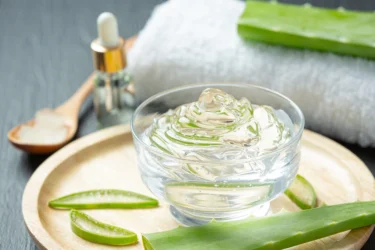
Intake of aloe vera gel helps purify the blood and promote liver function. You need to take fresh aloe vera gel to take care of your fatty liver[3]. However, before using any herbal remedy, it is important to consult or notify your healthcare provider. You can also drink aloe vera juice to help with fatty liver.

You can take kutki root powder with warm water to manage the changes in the liver due to fatty liver disease[4]. It is important consult your doctor before using herbal remedies, as certain herbs can damage your liver.

Many doctors recommend losing weight to manage the fatty liver disease[5]. Losing weight may help you reduce the fat content in the liver, swelling and fibrosis (tissue damage). It is important to lose weight safely; you should lose no more than half to one kilogram of weight in a week. You can start with regular exercise, which mayhelp you lose weight and reduce fat.

To manage the alcoholic fatty liver disease, you should try quitting alcohol. Alcoholic fatty liver disease is caused due to over-usage of alcohol. Reducing the use of alcohol might help you manage and reverse fatty liver[6]. If you face difficulty quitting alcohol, you might get help from a therapist or take part in an alcohol recovery program.
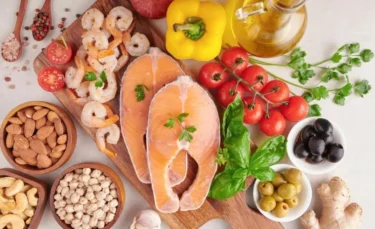
Fats are high in calories. Consuming more fats can increase your chances of developing obesity. Obesity is one of the risk factors for fatty liver[7]. It is advised to avoid saturated fats and trans fats and add unsaturated fats to your diet, such as omega 3 fatty acids, to get rid of fatty liver disease. Fish is one of the chief sources of omega 3 fatty acids. You can try fish like herring, salmon and mackerel to get sufficient omega 3 fatty acids. Seeds like flaxseeds and chia seeds also contain plenty of omega 3.
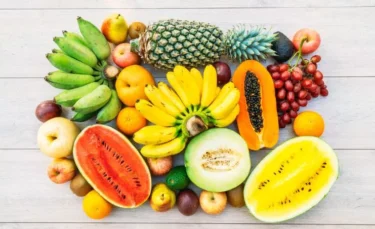
Fruits and vegetables are foods with a low glycemic index. Foods with a low glycemic index are less likely to cause a spike in your blood sugar levels. Eating fruits and vegetables will keep your blood sugar under control and help you manage the fatty liver disease.
You need to avoid consuming sugar in high amounts. Managing blood sugar levels may help to deal with fatty liver disease. Avoid foods with a high glycemic index, for example, white rice, white bread, and potatoes. Consumption of foods and drinks that contain high amounts of sugar, especially fructose, should be avoided. Fructose is a simple sugar used to sweeten soft drinks, sports drinks, and sweetened juices and drinks. You also need to consume less sugar at home. The table sugar, scientifically called sucrose, is rapidly converted to fructose and glucose during digestion.
Involving fibre in your diet has numerous health benefits, like keeping the cholesterol under control, keeping the body weight under control, and stabilising the blood glucose levels. Some important sources of dietary fibre include nuts, seeds, wholegrain foods, oats, barley, lentils, peas, and soy. Keeping the body weight under control may help you manage the fatty liver disease and reduce other complications.
Remain vigilant about monitoring your liver enzyme levels in regular blood test reports. Abnormal levels of liver enzymes can serve as indicators of liver conditions such as fatty liver disease. If you notice any irregularities, consult a doctor, who may also recommend additional imaging tests such as liver ultrasonography or liver fibroscan, if necessary. Early detection can help reverse the condition, if not addressed timely the changes may become irreversible leading to serious complications
Dr. Arpit Verma, MBBS, MD (Pharmacology)
In most cases of fatty liver, there are no symptoms involved; because of this, it becomes difficult to diagnose this disease. You might not experience any symptoms unless the disease has progressed to liver cirrhosis (a late-stage liver disease in which healthy liver tissue gets replaced with scar tissue). If you notice:
You should immediately contact your health care provider.
Also Read: Simple Home Remedies for Frequent Urination
Fatty liver is the condition in which fat builds up in the liver cells. You might not notice any symptoms associated with fatty liver unless the disease has progressed to a severe condition called cirrhosis. One good news is that you can manage fatty liver by taking caution and losing weight. You can also make use of home remedies like aloe vera or kutki to manage fatty liver disease. Exercising and following a proper diet are some other ways to manage fatty liver.
Fatty liver is difficult to diagnose, but if you notice symptoms like nausea, abdominal pain, swollen legs and abdomen and mental confusion accompanied by weakness, you should contact your doctor immediately.
Also Read: What is Hepatitis A? Causes, Symptoms, and How It Spreads
The liver can repair itself. Therefore, if you can avoid the factors causing your fatty liver, you can reverse fatty liver disease. For this, it is important that you consult your doctor and get proper guidance.
Maintaining your overall health is the best way to prevent fatty liver disease. Do things that keep you healthy, such as maintaining a healthy body weight, exercising regularly, and limiting alcohol consumption.
People with non-alcoholic fatty liver disease can develop complications like liver cirrhosis and liver cancer. Liver cirrhosis can lead to liver failure, which requires a liver transplant. Those suffering from alcoholic fatty liver disease can develop complications like alcoholic hepatitis and cirrhosis.
Herbal remedies to manage fatty liver include aloe vera gel and kutki root. Intake of aloe vera gel enhances liver functions, whereas kutki root powder with warm water can help manage fatty liver. Herbal remedies can also cause damage to the liver.3 Therefore, it is important that you consult your healthcare provider before using these herbal remedies. Your doctor can guide you about the possible treatments for fatty liver.
Being overweight is one of the factors that puts you at high risk of developing fatty liver disease. You need to maintain a healthy body weight to stay healthy.
Liver cirrhosis is the result of severe damage to the liver. Fatty liver disease, if left untreated, can progress to liver cirrhosis. The healthy tissues of the liver are replaced by hard scar tissues. Liver cirrhosis can slow down or completely block liver functions. It can progress to liver cancer or liver failure.
Disclaimer: The information provided here is for educational/awareness purposes only and is not intended to be a substitute for medical treatment by a healthcare professional and should not be relied upon to diagnose or treat any medical condition. The reader should consult a registered medical practitioner to determine the appropriateness of the information and before consuming any medication. PharmEasy does not provide any guarantee or warranty (express or implied) regarding the accuracy, adequacy, completeness, legality, reliability or usefulness of the information; and disclaims any liability arising thereof.
Many of us today have skincare goals that might be lightening dark spots or circles, preventing acne breakouts, wrinkled skin, or obtaining flawless clear skin. There are various lotions, creams, serums, and other products on the market to help achieve this skincare goal. However, it takes more than just these products to obtain clear, healthy skin. Simple lifestyle measures like eating the right foods, getting an ample amount of sleep and quitting smoking can help in the process of obtaining clear skin1.
Some skin issues that lead to dark spots on your face or sometimes result in scars include2:
The following remedies can be used to relieve acne and promote healthy, clear skin:

Tea tree oil is an essential oil that is known to be effective against acne, thereby helping promote clear skin. It also helps in faster wound healing9. To use tea tree oil, you first need to dilute it with some carrier oil, for example, olive, coconut or almond oil and apply it to the skin. Also, avoid using tea tree oil if you are allergic to it. You can do an allergy test by first applying it to a small area.
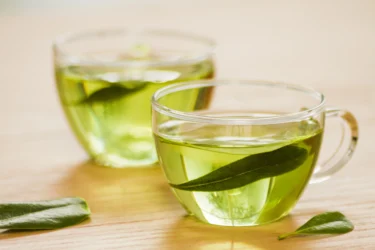
The extracts of green tea are helpful in the management of acne, thus helping in achieving clear skin. According to studies10, skin lotions containing green tea extracts proved to be efficient in the management of acne. You can make a green tea face mask using honey, green tea and baking soda. Mix these ingredients to make a paste. You can apply this paste as a face mask to get clear skin.

This herb can be used to manage acne, resulting in clear skin. Moreover, it helps soothe skin and clean up outbreaks. Aloe vera also helps to deal with inflammatory conditions like boils and cysts11. You can apply aloe vera gel directly on your face by massaging gently. Aloe vera gel can be added to your homemade face masks and face packs as well.
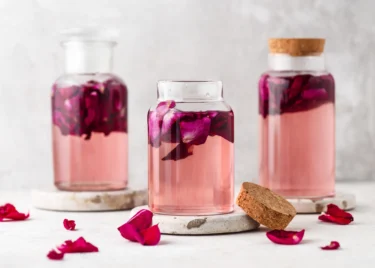
Rosewater is helpful in the management of acne and blackheads, thereby helping to attain clear skin12. To use rosewater, take some in your palms and massage gently on the face. You can also use cotton to gently dab the rose water on the skin.
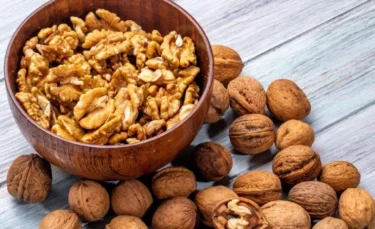
This herb is used to produce a great wash for a variety of skin issues, including worst cases of acne, thereby helping improve skin health and helping to obtain clear skin. To make walnuts a part of your skincare routine, you can use a walnut face mask and face scrubs. To make the walnut face mask, mix honey, besan (gram flour) and ground walnuts together to make a smooth paste. Apply this paste to the face as a face mask. To make walnut scrub, ground some walnuts and add some olive oil. Apply this scrub by gently massaging it on your skin.
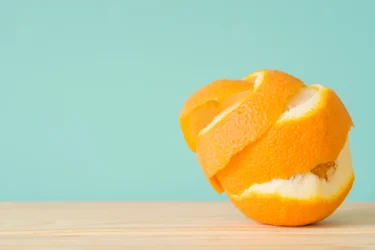
The juice and milk paste obtained from the orange peel is known to be effective in the management of acne. Therefore, it helps in promoting clear skin13. You can use orange peel powder to make face packs. Mix orange peel powder and yoghurt to make a paste. You can apply this orange peel and yoghurt face pack for clear and healthy skin.
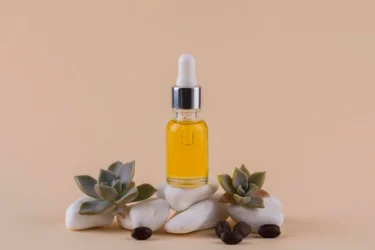
This essential oil has been used for dealing with acne and psoriasis, thereby resulting in clear skin14. Jojoba oil can be applied directly to the skin as a serum. But before using the oil, make sure you are not allergic to it by doing a patch test first. You can also put jojoba oil in other face packs to get clear and healthy skin.
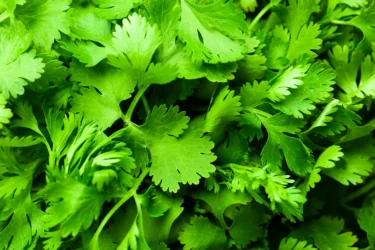
The oil of coriander has antibacterial and antifungal properties. Thus, it is helpful in managing acne, which in turn helps promote healthy and clear skin15. You can use freshly ground coriander leaves by mixing them with aloe vera gel. Apply it evenly on the face and massage gently for clearer skin.
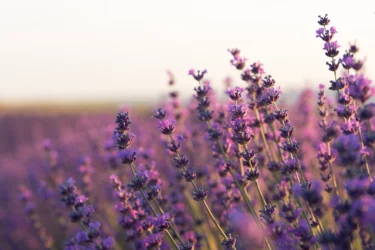
The extracts obtained from lavender have been used to deal with acne and help obtain clear skin16. Lavender oil can be applied to the skin after mixing it with carrier oils like olive or coconut oil. Gently massage this mixture on the face to get clear skin. You can also use a cotton ball to gently dab it on the skin.
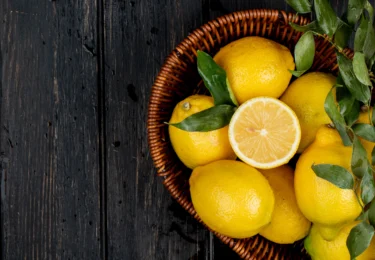
This fruit has been used for various skin conditions like acne, warts, sunburns, and scars17. To use lemon juice, mix a small quantity with honey and apply it to the face. You can also put lemon juice in your face pack recipes. If you feel any irritation after using lemon juice, wash it immediately.
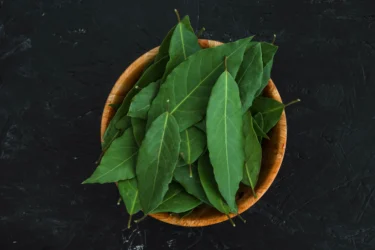
A few neem leaves can be taken and crushed to get a paste. This paste can be applied on the face where there is acne to get clear skin18. Making a neem face pack is easy. Start by boiling some neem leaves and orange peels. When they become soft, take them out. Grind them to make a smooth paste. Apply this paste to get clear skin.
At times, a poor diet that includes carbohydrates and sugars can lead to inflammation (swelling), redness, puffiness, and breakouts. To obtain glowing, clear skin, you can change to a diet that includes vegetables, fruits, seeds, nuts, and fish. A diet comprising tomatoes, spinach, salmon, and avocados contains various minerals and vitamins that help boost your skin health.
Pro Tip: A consistent skin care routine is the key to healthy, glowing skin. You may explore the benefits of products like topical Niacinamide serum, mild cleansers and moisturisers that suit your skin. Consume a balanced diet, stay hydrated and don’t mess up with your sleep schedule.
Also Read: 20 Foods To Eat For A Healthy Skin!
It is essential to visit a dermatologist (skin and hair specialist) when:
Also Read: Wonderful Home Remedies for Skin Tightening
Having clear, flawless skin is a dream for everyone. Conditions like acne, folliculitis, sun allergy, melasma, heat rashes and sunburns can result in marks on the face. Several home remedies like green tea, tea tree oil, rose water, lemon, lavender, jojoba oil, coriander, walnut, orange peel and aloe vera can be used to manage acne and other skin conditions and obtain clear, flawless skin. However, it is important to visit a doctor if your condition doesn’t improve or if you are anxious and want clear, flawless skin.
Walnut husks can be boiled with sufficient water, strained and then stored in a corked jug. It can then be used on the face to manage acne and obtain clear skin.
Orange peels can be taken and dried. The dried peels can be powdered and sieved. This powder can be combined with milk to obtain a paste. This paste can be applied to the face before going to bed at night. The peels of an orange or lemon can be put in a blender, and this juice can be used on the face to manage acne and obtain clear skin.
Rose petals can be dried and added to boiling water. This mixture is allowed to cool down and then can be consumed as a drink. It can also be used as a face wash or wet pack.
Poplar buds are used to manage acne, resulting in clear skin.
Disclaimer: The information provided here is for educational/awareness purposes only and is not intended to be a substitute for medical treatment by a healthcare professional and should not be relied upon to diagnose or treat any medical condition. The reader should consult a registered medical practitioner to determine the appropriateness of the information and before consuming any medication. PharmEasy does not provide any guarantee or warranty (express or implied) regarding the accuracy, adequacy, completeness, legality, reliability or usefulness of the information; and disclaims any liability arising thereof.
Next Page »